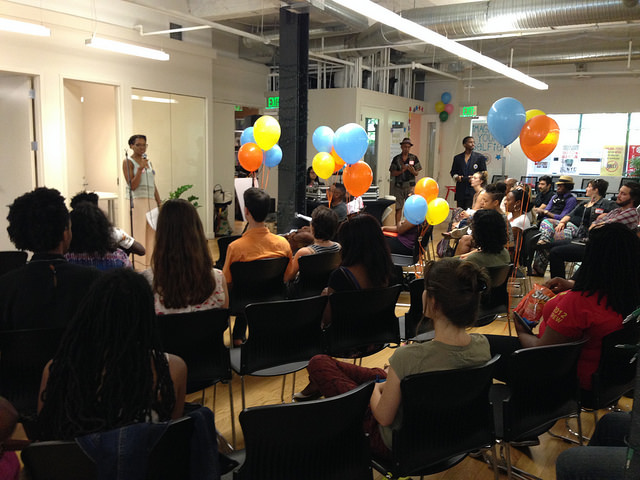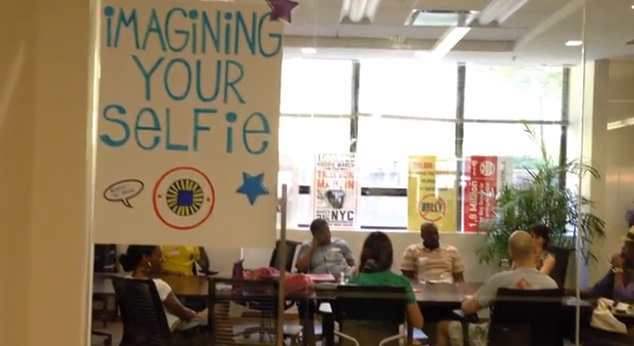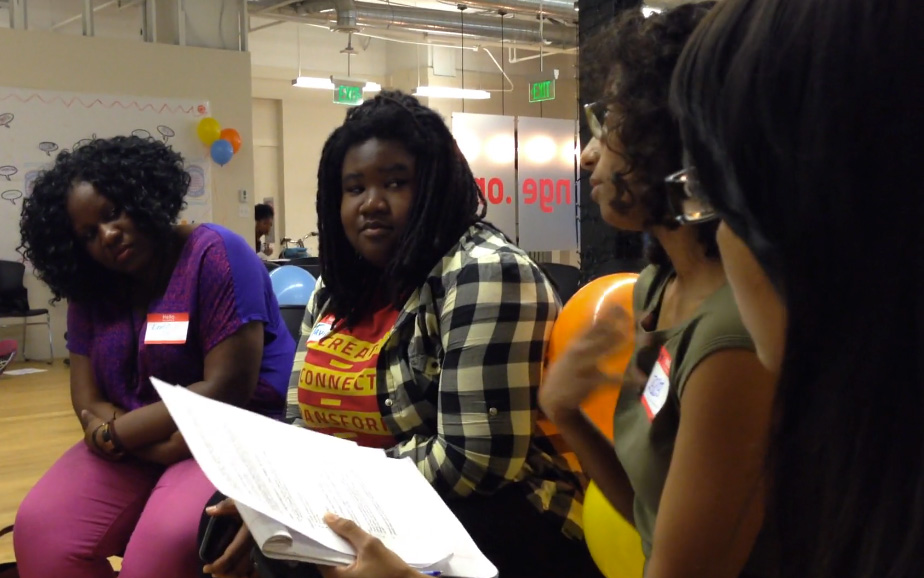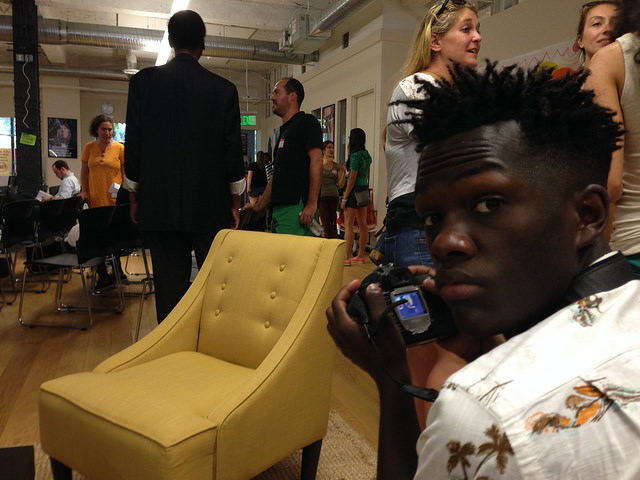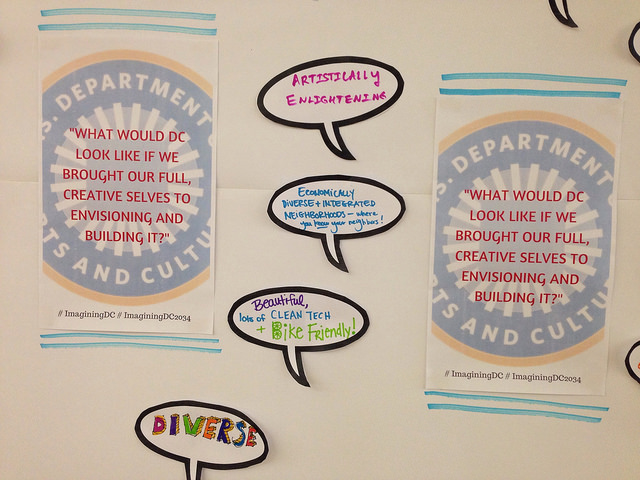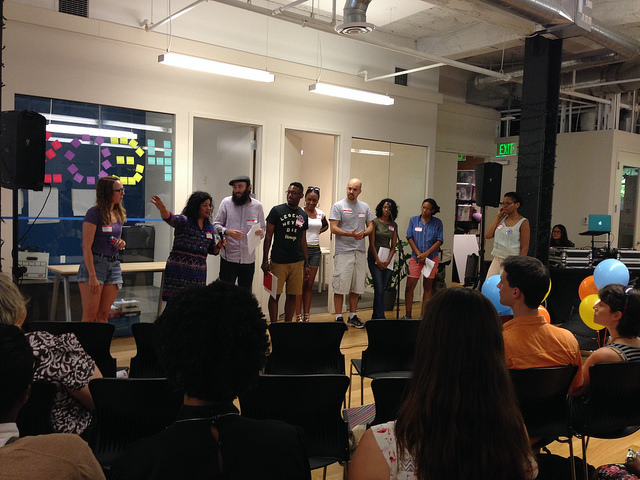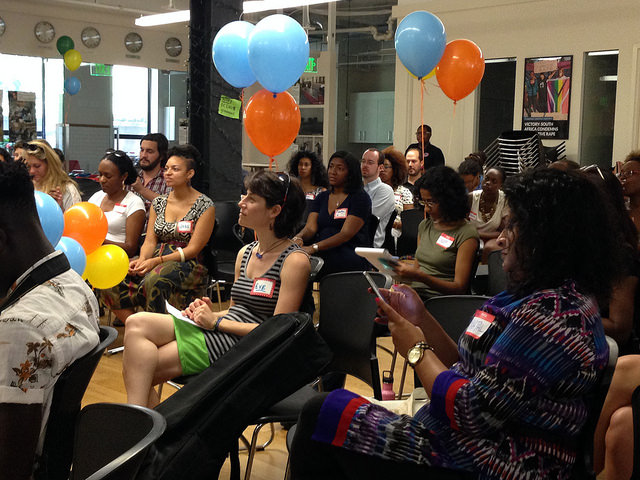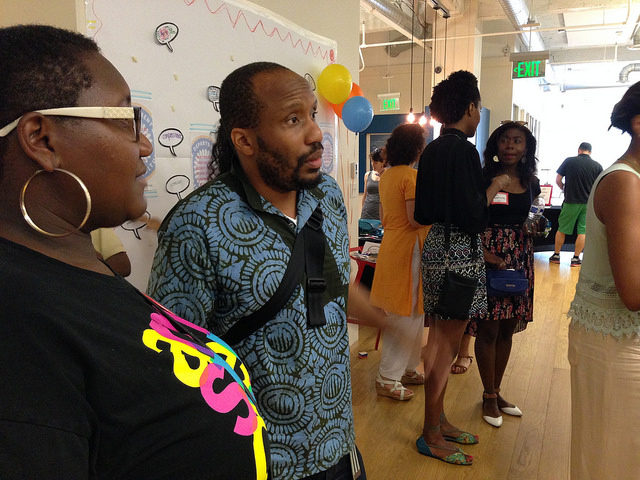NOTES ON SOLAR FLARES: IMAGINING, DESIGNING AND FACILITATING #IMAGININGDC
— Jessica Solomon, Founding Cultural Agent
THE BEFORE
Before I launched the first solar flare into the universe about my role as a USDAC Founding Cultural Agent and the soon to be D.C. Imagining, I was in my laboratory being consumed, amazed and affirmed by Poet/Activist/Black Feminist/Architect/AncestorJune Jordan and her friendship with Futurist Architect Buckminster “Bucky” Fuller. Their 1965 collaboration, the “Harlem Skyrise Project” was environmental and social justice at its core. Specifically, her writing about getting to that deliberate moment of love/action was a salve to my oscillating feelings about the place I call home.
I share June Jordan’s words about the genesis of the “Harlem Skyrise Project” as a love note to myself, a meditation on the power of imagining and a primer for some of us.
“…the agony of that moment propelled me into a reaching far and away to R. Buckminster Fuller, to whom I proposed a collaborative architectural redesign of Harlem, as my initial, deliberated movement away from the hateful, the divisive.
My first meeting with Bucky lasted several hours, just the two of us, alone. And when we separated, agreed on the collaboration for Esquire magazine, I felt safe in my love again. We would think and work together to design a three-dimensional, an enviable, exemplary life situation for Harlem residents who, otherwise, had to outmaneuver New York City's Tactical Police Force, rats, a destructive and compulsory system of education, and so forth, or die.
This was a way, a scale, of looking at things that escaped the sundering paralysis of conflict by concentrating on the point, the purpose of the fight: What kind of schools and what kind of streets and what kind of parks and what kind of privacy and what kind of beauty and what kind of music and what kind of options would make love a reasonable, easy response?
Forward from that evening in Fuller's room, at the St. Regis Hotel, my sometime optimism born of necessity hardened into a faithful confidence carried by dreams: detailed explorations of the alternatives to whatever stultifies and debases our lives.
My life seems to be an increasing revelation of the intimate face of universal struggle. You begin with your family and the kids on the block, and next you open your eyes to what you call your people and that leads you into land reform into Black English into Angola leads you back to your own bed where you lie by yourself, wondering if you deserve to be peaceful, or trusted or desired or left to the freedom of your own unfaltering heart. And the scale shrinks to the size of a skull: your own interior cage.
And then if you're lucky, and I have been lucky, everything comes back to you. And then you know why one of the freedom fighters in the sixties, a young Black woman interviewed shortly after she was beaten up for riding near the front of an interstate bus--you know why she said, "We are all so very happy."
It's because it's on. All of us and me by myself: we're on.”
I’d be remiss if I didn’t acknowledge that, coming in at a close second to my fascination with June Jordan X Buckminister Fuller, was this idea of “Emergence.” I was introduced to this concept in an article by Margaret Wheatley and then again by Invincible, an amazing Detroit-based cultural worker, artist and member of the collective Complex Movements. Basically, there's much to learn in the biological knowings of flocks of birds, schools of fish and swarms of bees. Our local, national and global social movements need to take cues from nature.
I came to imagine the D.C. Imagining with a psychic energy connected to those living, working and creating in Washington, D.C.—the socio-political belly of the United States. I choose to see this energy as neither good nor bad, more like latent, full of potential.
I believe that communities are always envisioning for themselves, even when they don’t recognize it. I also believe that many of these communities share the same local, cultural, social and economic profile for all types of reasons.
THE CO-CREATION
We made much of the planning process transparent and accessible to citizen artists via social media and word of mouth. Two hours before every planning meeting, I’d share the same mini-imagining prompt online that we were using that evening. At the meeting, I’d share the responses we received online, and after the meeting, I’d post photos and a recap of what was discussed. It was important to me to archive and build physical and digital #ImaginingDC communities and bridge the two.
“Bright visions of change
Fully realized by those
Who’ve made DC home”
Before our second planning meeting, I boldly posted, “What are some issues impacting people in D.C.?” This was a whole different kind of solar flare. Immediately responses popped up. “Gentrification”, “White Supremacy”, “Poor Education”, “Displacement” and “Food Deserts” ran up and down the timeline. I really hadn’t thought out my end goal for this post but I could not ignore these very real issues; I knew they had to be somehow embedded into the work at the Imagining. In Cultural Agent mode, I challenged respondents to share an example of what the inverse of those things could be. I was and energized by the powerful, creative responses.
THE EVENT
Saturday, July 12, 1–4pm
In the spirit of June and Bucky, who knew the power of space and place, the Impact Hub was the perfect location physically and politically. It is an accessible, co-working space for organizations and companies committed to social justice, sandwiched between two major metro stops. With a bright, open floor plan, we were able to host 100 people effortlessly.
The air was festive and deliberate; our resident DJ Les Talusan curated an #ImaginingDC set that featured local jams. Besides the content, we had guided arts stations connected to the theme of the day and a photo exhibit featuring youth photographers from Critical Exposure, an “Imagining Your Self-ie” booth.
The agenda was packed. In three hours we wanted 100 people from all over the city in the state of mind to imagine twenty years from now; to discuss their visions for the city in small groups; to create a shared vision in their small group; to creatively report out their vision to the larger group; and to plan action steps to get to those visions.
We embraced uncertainty. I acknowledged at the outset that we were not going to solve anything today, that we may have more questions at the end than we had at the beginning, and that that was OK. In fact, we were counting on these things. Everyone dived in for three hours with creative interpretations of visions for the city that included cooperatives, artists in schools, ministers of culture, go-go museums and truly diverse communities. We hosted a Social Justice Bazaar—a curate information table featuring D.C.’s most dynamic social good organizations. D.C. born Grammy-nominated progressive hip-hop artist and cultural gem of D.C. Christylez Bacon created an Imagining freestyle rhyme on the spot using ten words from the audience. Our youngest participant was 7 and our oldest was 75. We made it through the entire agenda.
THE EMERGENCE
I think what was most powerful was/is this acknowledgement that we must get creative about how we are going to save ourselves from ourselves. People who hadn’t really imagined art and culture as tools to be applied and integrated into justice work were doing just that. People identified and claimed their role on making our city a more just, creative place. People who didn’t necessarily share the same local, cultural, social and economic profile were in harmony listening to each other. There are mini-imaginings happening right now in recreation centers, board rooms, classrooms and kitchens. Flocks of birds, schools of fish and swarms of bees.
There is a deep interest in “what’s next.” As a founding Cultural Agent, hosting one of the first Imaginings, I feel a strong responsibility to ensure that the next steps are firm and rooted in the same energy that we generated on July 12, and what has been brewing inside us all for long before then.
Just like June Jordan knew that justice and transformation for Harlem would take stepping beyond herself, I am so clear that this work—imagining and planning for D.C. 2034—cannot happen in a three hour meeting or in a silo. It must happen as a collective. Together.







